Edema, or swelling, can occur to anyone at anytime.
Edema is a condition where swelling occurs in the feet, ankles, and/or legs because of high fluid build-up.
Edema happens when blood vessels leak fluids into nearby tissues.
This results in a build-up of excess fluid, which makes the tissues swell. This can happen in almost any part of the body, but are common in the feet, ankles, and legs.
Removing excess fluid can be difficult because of veins not receiving enough pressure.
This means that the veins need to work extra hard against gravity to remove the fluids as well as pump blood efficiently towards the heart.
What is Edema?
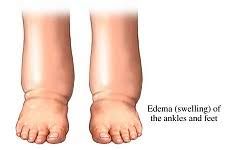
Factors that can Cause Edema
Various factors can cause the cause edema, such as the following:
- Poor blood circulation – Due to low or improper blood flow throughout a certain part or all parts of the body, this can slow processes including fluid distribution.
- Injury – When a body part, such as the foot, endures injury, like blunt force trauma, swelling may follow.
- Pregnancy – Edema is common among pregnant women; they may have swelling feet because of retaining a lot of fluid.
- Medication – There are cases when some varieties of drugs cause edema; some can be calcium channel blockers, non-steroidal anti-inflammatory drugs, estrogen, and steroids. Medications can be adjusted but another alternative can be wearing compression sleeves or compression stockings that reduce pain. Aside from medication compression socks can also help to prevent swelling.
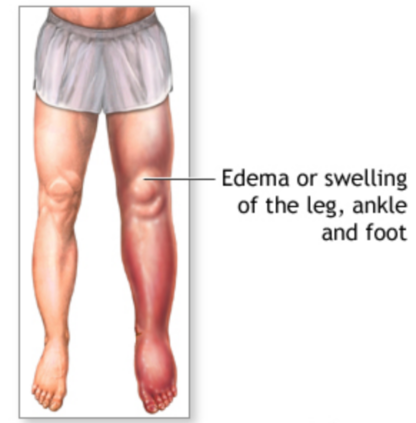
Types of Edema that Affect the Feet or Legs
1. Peripheral Edema
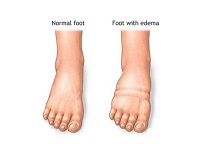
This is where fluids accumulate in tissues, particularly in the peripheral part of the vascular system in the legs and feet. Peripheral edema commonly affects elders, but can also be caused by other conditions such as trauma, alcoholism, altitude sickness, pregnancy, hypertension, and sickle cell anemia.
This type of edema can range from minor, in which mild issues and no lasting damage to the body may occur, to severe, in which this can lead to a loss of sensation in the lower limbs.
2. Lymphedema
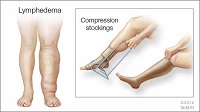
Lymphedema is a condition where legs swell due to damage in the tissues of the lymph nodes.
These nodes are necessary for fighting off germs and other microbes in the body. If they are damaged, such as a side effect from chemotherapy, fluid can build up in the lymph nodes.
Treatments for Edema
Doctors will undergo checks or testing to determine the underlying causes of edema before giving a prescription to treat it. The treatment will depend on the severity; surgery may be needed to remove the fluid build-up or medications to manage the swelling.
Mild edema usually goes away on its own after a while, however, severe edema may require medical treatment.
In order to prevent edema from reoccurring, try out the following:
1. Increasing Movement
Moving frequently and getting enough physical exercise can help maintain proper blood circulation which, in turn, prevents swelling in certain parts of the body.
2. Reducing Salt Intake
Salt can make the body retain more fluids, which can cause fluid build-up in the lower extremities. It is best to consult with a dietitian or nutritionist to understand better how much sodium your body requires every day.
3. Wearing Compression Garments
Compression garments, such as compression socks, can be used by almost anyone, including people suffering from edema. Continue reading to find out more!
What are Compression Socks?
Compression socks are designed to apply gentle pressure onto the legs and feet in order to promote proper blood circulation.
The type of socks that you can use depends on the type of edema that you are having; for example, people with lymphedema may require the strongest level of compression to minimize the swelling effectively.
There are several reasons why compression socks are great for edema Some of them include:
- Boosts circulation in the legs.
- Prevents blood from pooling or clotting.
- Helps prevent becoming lightheaded when standing.
- Improves drainage of the lymphatic system.
- Supports veins.
In short, there are special socks to help with swelling.
Other Popular Articles about Compression Socks
- Medical Compression Socks
- Easy To Put On Compression Socks for Elderly
- Best Compression Socks for Swelling
- Wide Calf Compression Socks
- Compression Sleeves for Legs
- Best Compression Socks for Swelling
- Sock Soothers
- Toeless Compression Socks
- Can You Wear Compression Stockings 24 Hours a Day
- Compression Socks for Men
- Do Compression Socks Help Gout
How to Select the Best Compression Socks for Edema
1. Choose the Right Compression Level
Compression levels are measured in ‘millimeter of mercury (mmHg)’; the higher the millimeter of mercury, the stronger the compression level. Different levels serve different needs.
For mild edema, a compression level of 8-15 mmHg or 15-20 mmHg would be suitable.
For most people, 20-30 mmHg is best.
2. Choose the Right Type
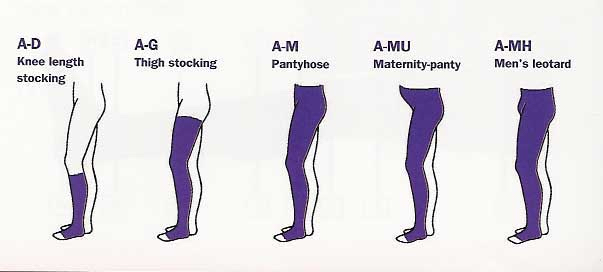
There are many types of compression socks available, ranging from how compression is distributed to the length.
- Graduated compression – Highest amount of pressure is applied on the ankles and gradually decreases upwards.
- Knee-high length – These stop just below one’s knees. They are great if you are not comfortable with stockings.
- Thigh-high length – These reach up to the thighs and cover the entire calf.
- Pantyhose – These go all the way up to the waist. For men, these may go by the name ‘men’s leotards’. This is ideal for those who experience swelling from their feet to their hips.
If you are unsure which type to choose from, the best thing to do is to determine which area is affected by edema or poor circulation. If you have edema, you can opt to get knee-high socks, especially if the swelling is around your ankles.
3. Choose the Right Material
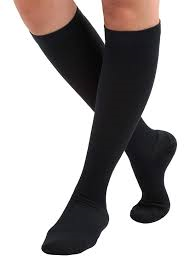
There are a lot of styles available in the market. You can opt for a color that matches your skin tone or go for styles, such as opaque leggings, sleeves, or knee-high socks, to suit your attire.
- Fabrics such as cotton, silk, wool, and nylon are commonly available, but it is still imperative to choose a material that feels comfortable and does not irritate the skin.
- Sheer materials are often transparent, lightweight, and fashionable. Women may choose sheer for style purposes, however, they might not be as durable compared to other materials.
- Aside from prioritizing comfort, also consider a durable fabric that is strong enough to provide support for when swelling may occur.
- Some companies produce socks for athletes, which are made of a high-tech blend of cotton or wool that can wick away moisture.
Ensure that you inspect the material composition of compression socks before purchasing. When shopping for compression socks, you can check out an online store, such as ComproGear to see a variety of choices.
Side Effects of Wearing Compression Socks
There are times where side effects can occur from wearing compression socks, even if you had been prescribed to by a medical professional.
If this is your first time wearing compression socks, it is best to check for any irritation or redness on the skin. This can indicate signs of an allergic reaction to the material or that the size of the socks are too small. It is vital to get a proper prescription with accurate sizing to avoid these side effects.
How Long Should You Wear Socks?
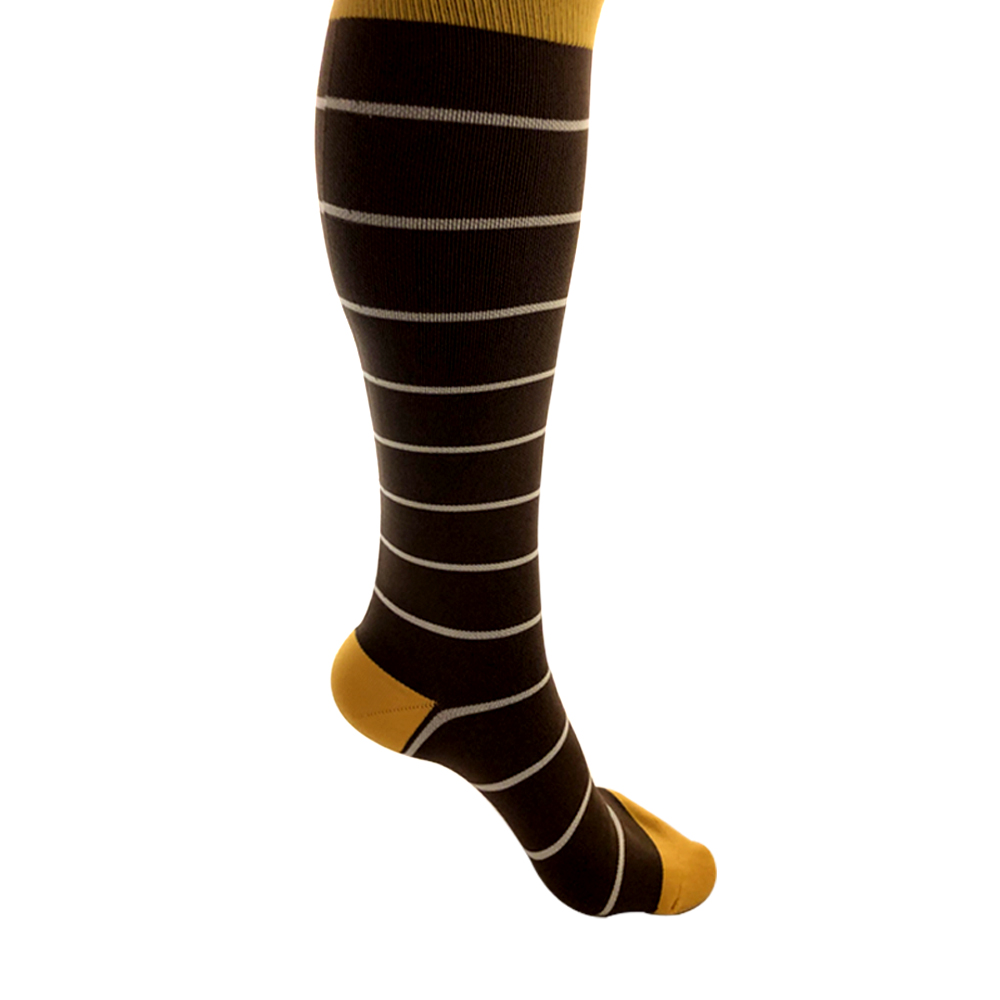
This depends. Some may feel it is better to wear them from morning and then take them off before bed, while others may need to follow a medical professional’s advice.
If edema is well under control, then you may no longer need to wear compression socks. However, it is better to continue wearing them routinely to maintain proper leg health.
Conclusion
Edema is an uncomfortable condition that can affect the lower extremities such as the legs, ankles, or feet. Sometimes they are mild and can go away on their own in a short amount of time, while some may require immediate medical attention. If you suspect that you have edema, you should immediately call your doctor. One home remedy that can prevent and treat edema is by wearing compression socks that fit correctly.
